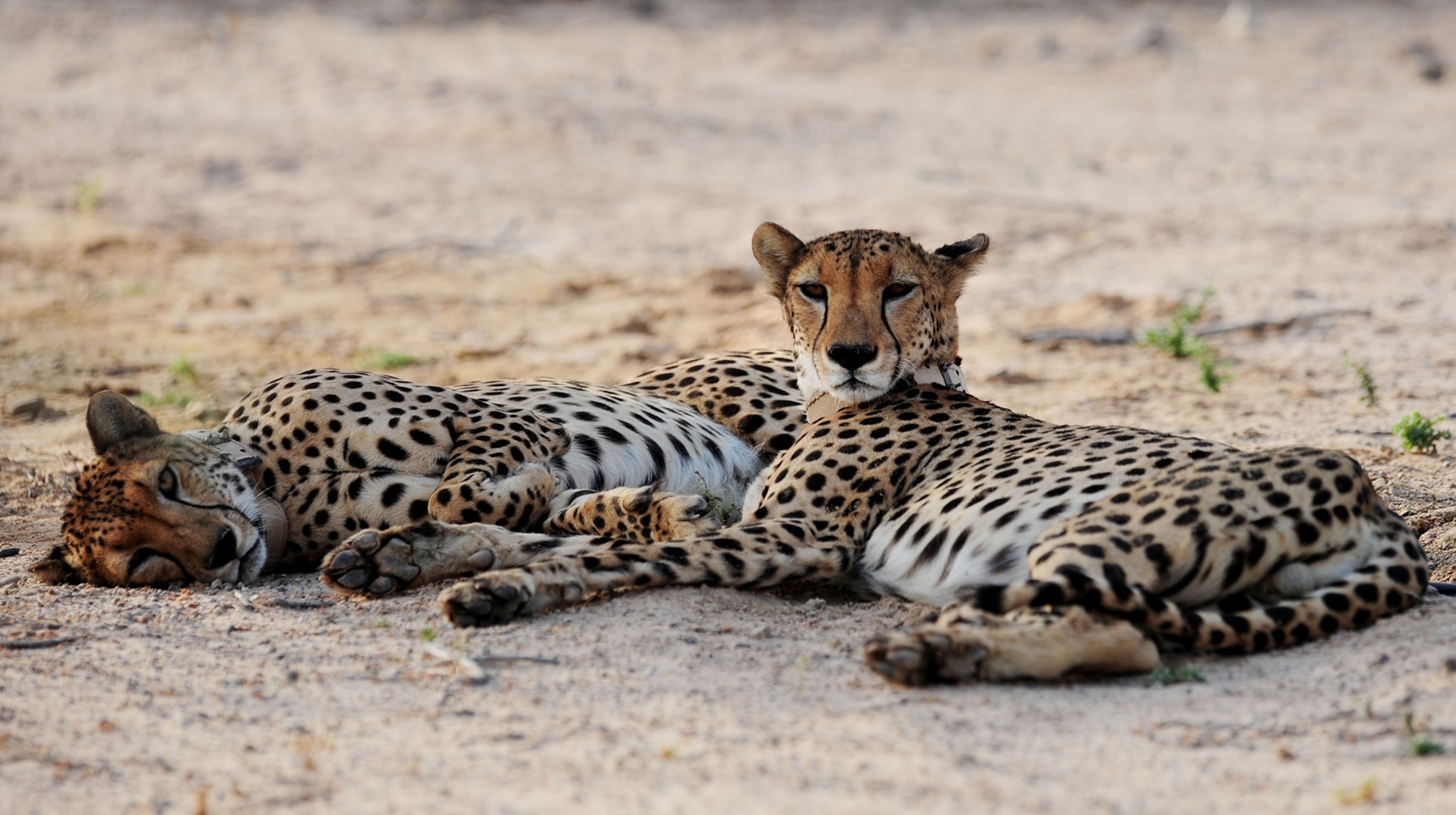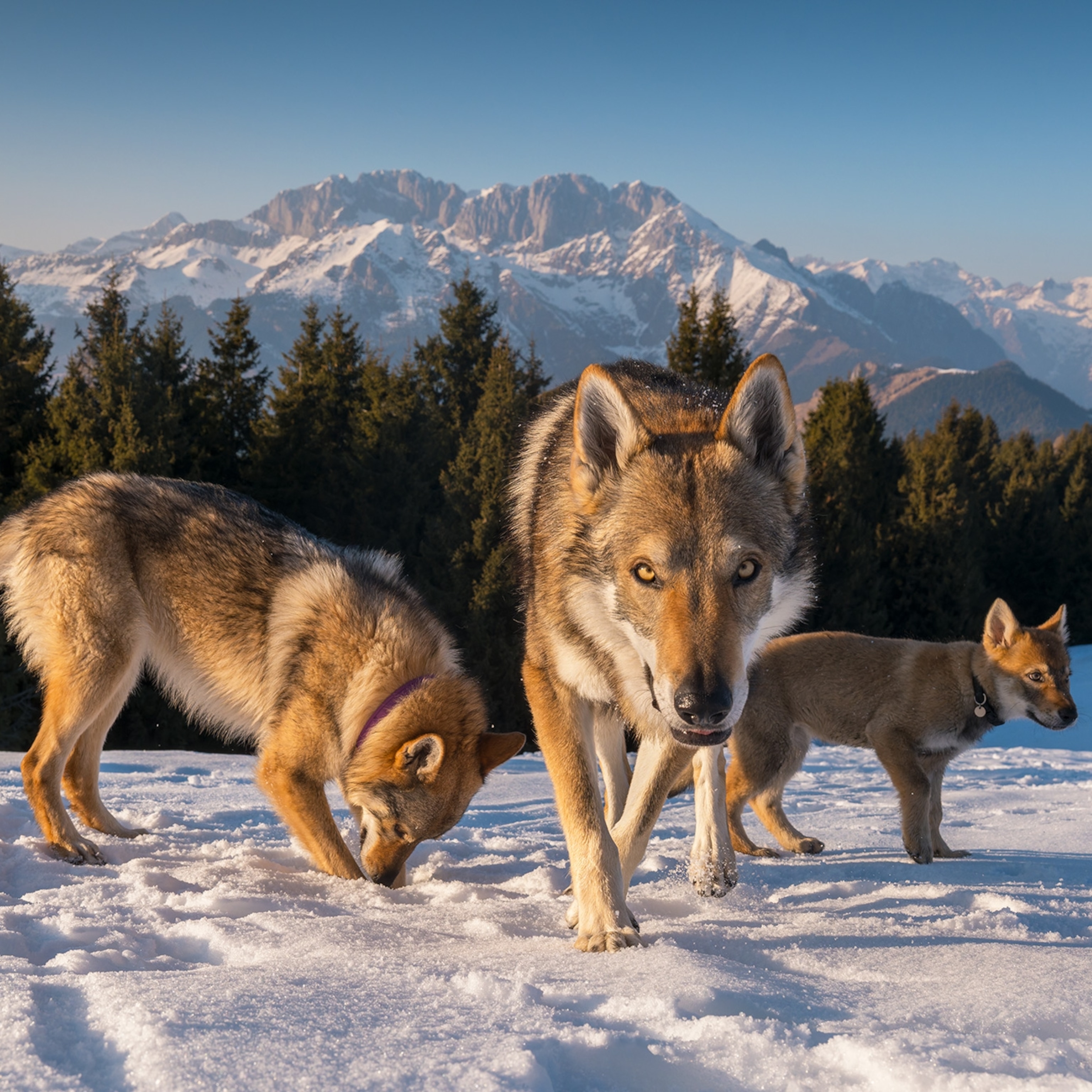
Pet Cheetahs Pose With Fancy Cars and Boats on Instagram
Rich Arabs flaunt their cheetahs on Instagram and Facebook, but Gulf states are being told to crack down on exotic pets.
A cheetah, upright, its lean muscles and black spots gloriously evident, stares straight at the camera. You might think it’s standing on grass or catching some rays outside. Instead, it’s posing in front of a fancy white car, collar around its neck, ears back.
The photo is on Instagram, where it’s easy to find images of wealthy cheetah owners, mostly in the Gulf states, showing off their exotic pet cats. The owners pose with cheetahs in their homes, luxury cars, even on speedboats.
But this passion to own the world's fastest land animal comes at a cost. Almost all the cheetahs are bought illegally, often as cubs, for upwards of $10,000.
Evidence suggests that the trade of wild cheetah cubs is happening on a large scale, National Geographic reported in 2012, to say nothing of the trade in captive-bred cheetahs. Their numbers in the wild are now estimated at fewer than 7,000—about a 93 percent population loss since 1900.
As a result, last year the International Union for Conservation of Nature upgraded the cheetah’s status to vulnerable, with the illegal trade cited as one of the threats it faces.
The plight of cheetahs has caught the attention of the world’s top wildlife body, the 181-nation Convention on International Trade in Endangered Species of Wild Fauna and Flora (CITES). In a session today at the Standing Committee meetings taking place this week in Geneva, it approved a series of recommendations intended to curb illegal trade and ameliorate the situation.
Pressured by several African countries to address the problem, two years ago a CITES working group issued a report that, among other things, called out the Gulf states for not doing enough to tackle the trade. The report led to a workshop on the issue in November 2015 in Kuwait that brought together 13 states where cheetahs live and there’s demand for them as pets.
The new CITES proposal calls for strengthening and enforcing existing wildlife legislation among all parties and for launching public campaigns to raise awareness about the illegal trade in cheetahs and the risk of prosecution for those engaged in it, especially in the Gulf states.
“It’s alarming,” Patricia Tricorache, who has been investigating the illegal trade for the Namibia-based Cheetah Conservation Fund. Cheetahs that end up in the United Arab Emirates, Qatar, Saudi Arabia, Kuwait, Bahrain, and Oman are captured in East Africa and trafficked through war-torn and impoverished Yemen and unstable Somaliland, Tricorache told National Geographic.
“The numbers seem to be mind blowing,” she said, adding that she has documented 250 cases involving 1,000 illegally traded cheetahs since 2005. “I was told that in the last two weeks there were two sets of 30 cheetah cubs in Yemen ready to be shipped to the Gulf states.”
Susan Lieberman, vice president of international policy for the New York-based Wildlife Conservation Society, said the cheetah trade stands out because it’s not being driven by demand in China—as ivory, rhino horns, and tigers parts are—and is part of the luxury pet trade in the Gulf. There, lions, tigers, baboons, and other exotic animals are seen as a status symbol.
Recognizing the role social media sites such as Instagram play in fueling the trade, the 2014 CITES report also calls for the Secretariat to engage with “relevant social media platforms, search engines, and e-commerce platforms to address illegal international trade in cheetah through these platforms, and raise awareness of the conservation plight of cheetahs.”
Nick Mitchell, the East Africa coordinator for a range-wide conservation program for cheetahs and African wild dogs—a joint project of the Wildlife Conservation Society and the Zoological Society of London—said the “embarrassment factor” could motivate countries to act.
“I’m impressed how CITES does have an impact. Countries don’t like to be highlighted so they begin to get their houses in order,” Mitchell said. “But it can be a slow process.”
Shereefa al-Salem, a Kuwaiti who chairs the CITES Standing Committee Working Group On Illegal Trade In Cheetahs, said she believes authorities in Gulf countries understand the seriousness of the problem and are ready to act.
“We’re trying to increase efforts in enforcement as well as public awareness and social media,” al-Salem told National Geographic, adding that Kuwait has stepped up prosecutions. “We’re now aware this is a problem, and we would like to decrease the trade and resolve this problem.”
But Tricorache, of the Cheetah Conservation Fund, who attended last year’s Kuwait workshop, said Gulf countries are still “reluctant to admit a problem” and that there remains “a lot of finger pointing” over who’s to blame. She’s pleased that cheetahs are finally getting attention at CITES but worried that action might come too late.
“My biggest fear is that we’re going to run out of cheetahs in the Horn of Africa, and then who knows where they’re going to try and source them,” she said.
Michael Casey, a freelance writer based in New York, covers science and technology for Vice, Scientific American, Fox News and other publications. Follow him on Twitter.
Read more stories about wildlife crime and exploitation on Wildlife Watch. Send tips, feedback, and story ideas to ngwildlife@natgeo.com.








